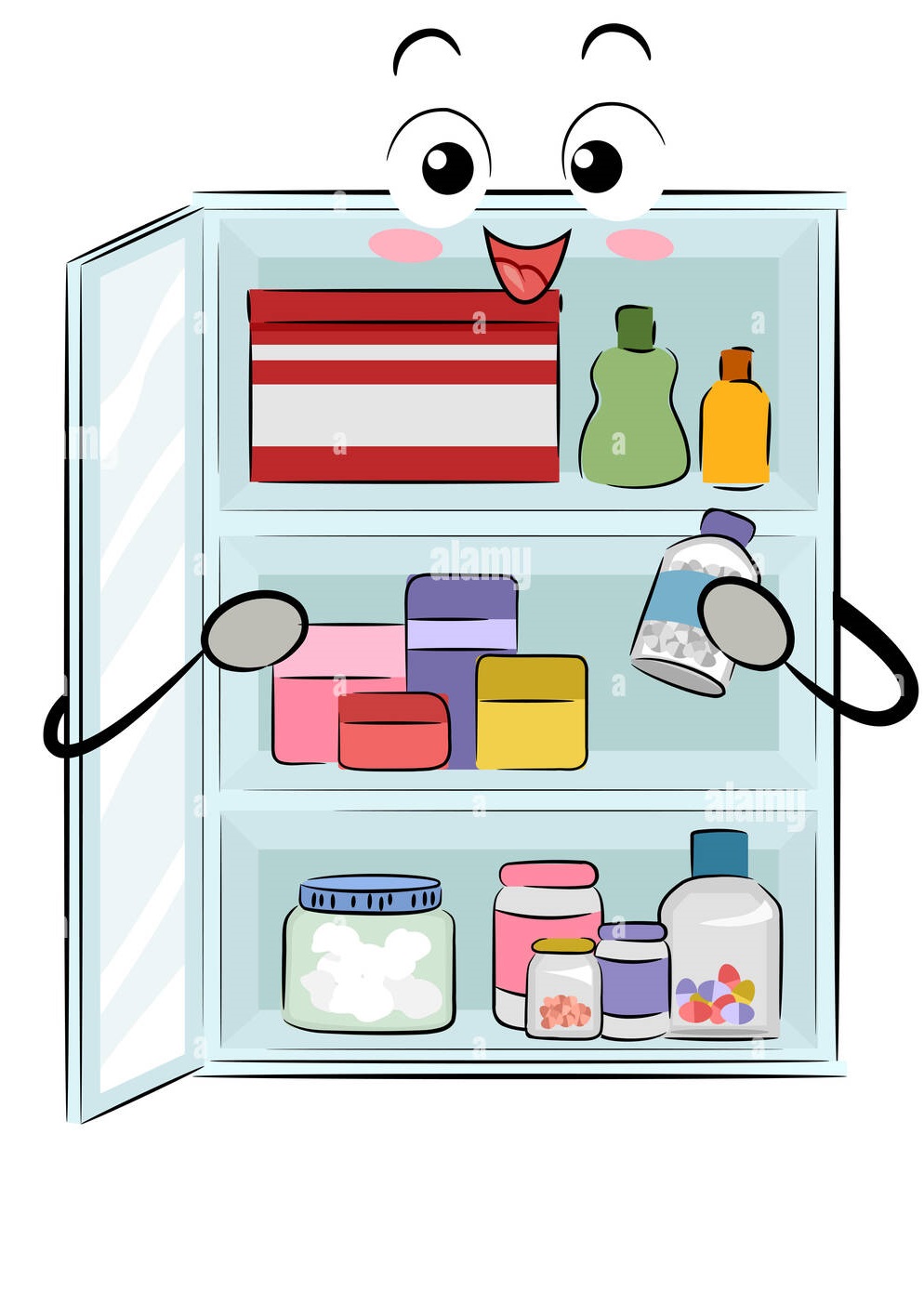Norfloxacin Eye/ Ear Drops
- Introduction
- Uses of Norfloxacin Eye/Ear Drops
- How Norfloxacin Eye/Ear Drops Work
- Composition of Norfloxacin Eye/Ear Drops
- Dosage and Administration
- Common Side Effects
- Warnings and Precautions
- Contraindications
- Careful Administration
- Overdose and Handling Precautions
- Interactions with Other Drugs or Substances
- Conclusion
Introduction
Norfloxacin Eye/Ear Drops are an effective antimicrobial treatment explicitly designed for eye and ear bacterial infections. These drops contain norfloxacin, an antibiotic that inhibits the synthesis of DNA. They offer a solution for a range of conditions from bacterial conjunctivitis to external otitis:
- Providing rapid relief of symptoms
- Targeting various strains of bacteria
- By administering these drops, the potential for systemic side effects is minimized, ensuring their efficacy while reducing risks.
Neglecting to treat infections in these sensitive areas can lead to immediate discomfort and long-term damage that may result in vision or hearing problems.
This article will cover Norfloxacin Eye/Ear Drops topics, including their pharmaceutical characteristics, indications and contraindications, administration guidelines, and potential side effects. We intend to provide readers with an understanding of this essential medical treatment.
Uses of Norfloxacin Eye/Ear Drops
Primary Uses for Bacterial Eye Infections
The primary focus of using Norfloxacin Eye Drops1 in therapy is to treat eye infections. These drops have proven effective against the microbes responsible for such ocular ailments. They work rapidly, usually showing results within 48 hours of use, and are conveniently applied topically.
Conjunctivitis
Pink eye or conjunctivitis is a problem that can be effectively treated with Norfloxacin Eye Drops. It occurs when the conjunctiva becomes inflamed, usually due to an infection. Starting Norfloxacin treatment promptly can speed up healing. Prevent the spread of the disease to others.

Keratitis
Keratitis is an eye condition that requires immediate attention. It affects the cornea. It can cause intense pain, sensitivity to light, and even vision problems. Norfloxacin Eye Drops play a role in managing keratitis by quickly getting rid of the harmful microbes and relieving symptoms.

Primary Uses for Bacterial Ear Infections
Norfloxacin Ear Drops represent the pinnacle of targeted treatment for ear infections. Specifically formulated to combat pathogens, they effectively eliminate the underlying causes of ear conditions. These drops can penetrate ear tissues with a low risk of causing harm to the ears. Additionally, they have interactions with other medications.
Otitis Media
Otitis media refers to an infection in the ear, which is quite common among children. The symptoms can vary from discomfort to severe pain. Using Norfloxacin Ear Drops can help speed up the healing process and reduce the risk of complications like hearing loss.

Otitis Externa
Frequently referred to as swimmer ear otitis externa, it is a condition where the external ear canal becomes inflamed. When water gets trapped in the ear canal, it creates an environment for bacteria to grow. Norfloxacin Ear Drops is a treatment option that quickly reduces bacterial activity and helps create an healing-friendly climate.

Secondary and Off-label Uses
Norfloxacin Eye/Ear Drops have a role in treating bacterial infections in humans. However, they are not limited to that. Sometimes, doctors use these drops for purposes based on careful clinical judgment. They may be used occasionally alongside medications for viral or fungal eye/ear infections. In addition, they can help treat cases where multiple drugs are ineffective. They also play a role in managing diseases in individuals with compromised immune systems.
Treatment of Eye and Ear Infections in Animals
Norfloxacin Eye/Ear Drops have a range of uses in medicine. Veterinarians frequently prescribe them to treat eye and ear infections in animals like dogs and cats. These drops are a way to effectively eliminate conditions and prevent any further complications in our furry friends.
Prophylactic Use Before Surgeries or Procedures
Norfloxacin Eye/Ear Drops are not used reactively but can also be used proactively. Surgeons and ophthalmologists frequently use these drops as a measure before performing invasive eye or ear surgeries. This proactive approach helps protect the area from potential infections, providing additional defense against microbial invasion.
How Norfloxacin Eye/Ear Drops Work
Mechanism of Action
Norfloxacin Eye/Ear Drops work by blocking the activity of DNA gyrase, an enzyme crucial for bacterial DNA replication. This antibiotic interrupts the multiplication of bacteria, effectively eliminating the agents. It targets the enzyme with a strong affinity, resulting in targeted action. The binding is irreversible, which ultimately leads to the death of cells. Additionally, it inhibits DNA supercoiling, a process in DNA replication.
Antibacterial Properties
The Norfloxacin Eye/Ear Drops have a range of antibacterial effects, capable of eliminating both gram-positive and gram-negative bacteria. They work by interfering with the bacteria's DNA, making them highly effective against bacterial pathogens.
Efficacy in Treating Infections
Their proven success in practice highlights the effectiveness of Norfloxacin Eye/Ear Drops. Patients typically notice an improvement in symptoms within a relatively short period, usually between 24 to 48 hours after using the drops. These drops have cure rates for bacterial eye and ear infections, and they are less likely to contribute to the development of antibiotic resistance compared to other medications. Moreover, they provide relief with minimal side effects that affect the whole body.
Composition of Norfloxacin Eye/Ear Drops
Active and Inactive Ingredients
The key ingredient that makes these drops effective against bacteria is Norfloxacin. Moreover, these formulations usually include substances like preservatives, buffering agents, and viscosity enhancers to improve their pharmacokinetic properties.

Variants and Their Differences
Norfloxacin Eye/Ear Drops are available in strengths and packaging options. Depending on the manufacturer, some variations may include corticosteroids to enhance their anti-inflammatory effects.
- The concentrations of Norfloxacin typically range from 0.1% to 0.3%.
- Packaging options can include single-use vials or multi-dose bottles.
- There may be the choice to include stabilizers or antioxidants for longer shelf life.
Dosage and Administration
Standard Dosage for Adults
For grown-ups, the usual treatment typically involves putting one or two drops into the eye or ear every four to six hours. However, the dosage1 can be adjusted depending on how severe the infection is and what the doctor thinks is best.
Dosage Adjustments for Children
The doses for children need to be adjusted to avoid any adverse effects. The amount of medication is typically reduced based on the child's age, weight, and how severe the infection is.
Frequency and Method of Administration
When administering the medication, it's essential to be very careful about maintaining cleanliness to prevent any contamination of the dropper tip. The frequency of administration usually depends on how the patient responds. It typically ranges from 2 to 4 times a day.
- Before applying the medication, make sure your hands are washed thoroughly.
- For eye administration, tilt your head backward; for ear application, tilt your head to the side.
- Remember not to touch the dropper tip on any surface to keep it sterile.
Common Side Effects
List of Most Common Side Effects
Norfloxacin Eye/Ear Drops are usually well tolerated. However, like any medication, they can have side effects5. The common adverse reactions may include:
- Local irritation or a burning sensation
- Redness or itching
- Temporary visual disturbances causing blurred vision
- Ear drainage or discharge.
Statistics on Occurrence
Based on the data we have, it seems that 10 15% of patients experience mild local irritation. However, severe reactions like persistent redness or itching are uncommon, affecting less than 5% of those receiving treatment.
What to Do if You Experience Side Effects
If you experience any effects, it is crucial to consult a healthcare professional immediately. It is not recommended to stop taking the medication without medical guidance, as suddenly discontinuing it could worsen the underlying infection.
- Make sure to document the type and duration of your symptoms.
- Reach out to your healthcare provider for a treatment plan.
- Avoid using eye or ear products simultaneously without approval from your physician.
Warnings and Precautions
Situations Where the Use of the Drug Should be Cautioned
While Norfloxacin Eye/Ear Drops are generally effective, it's essential to consider their suitability. They should be used with caution in patients who have had reactions to quinolones or have existing eye or ear conditions.
Allergic Reactions
Although extremely uncommon, there have been reports of reactions. The symptoms can vary from a rash in an area to more widespread effects, like difficulty breathing. If you experience these symptoms, stop using the product and seek urgent medical help.
Important Precautions
Due to its effectiveness in killing bacteria, it is essential to be cautious when using Norfloxacin Eye/Ear Drops. The excessive use of these drops can lead to the development of resistance. Therefore, using them for confirmed or highly suspected bacterial infections is advisable.
- It is crucial to obtain a diagnosis before starting the treatment.
- It is also important not to exceed the recommended dosage and duration of usage.
- To prevent cross-contamination, maintain the sterility of the dropper tip throughout its usage.
Contraindications
Conditions Where Use is Not Recommended
Norfloxacin Eye/Ear Drops should not be used if you have a known allergy to any of the ingredients in the formula or if you have an infection such as herpes simplex, as these drops do not work against viral agents.
Drug Interactions to Avoid
It is essential to be careful when using Norfloxacin Eye/Ear Drops together with medications that can cause harm to the ears or kidneys. Moreover, if you need to use eye or ear medications simultaneously, it is advisable to do so cautiously and preferably under the guidance of a medical professional.
- It is best to avoid using aminoglycoside antibiotics alongside Norfloxacin Eye/Ear Drops as they can potentially cause damage to the ears.
- When using topical medications alongside Norfloxacin, exercise caution to prevent any interference with its effectiveness.
- If you have any concerns about interactions between Norfloxacin and other medications you are taking, it is recommended that you consult your healthcare provider for personalized assessment and advice.
Careful Administration
Administration to Elderly Patients
Elderly patients often have underlying health conditions and reduced organ function. Therefore, monitoring Norfloxacin Eye/Ear Drop use in this age group is crucial. It is essential to be cautious when it comes to patients with compromised kidney function, as the way the medication is processed in their body may be different.
- Regular monitoring is necessary to evaluate the treatment's effectiveness and potential side effects.
- Adjustments to the dosage may be needed based on renal function.
- Consulting healthcare providers for a personalized treatment plan is advisable.

Administration to Pregnant Women and Nursing Mothers
It is advisable to consider the benefits and risks before administering Norfloxacin Eye/Ear Drops to pregnant or lactating women. Since there is data from human studies, it is essential to approach this situation cautiously.
- Animal studies have not shown any effects on fetal development; sufficient human data is unavailable.
- It is recommended to consult a healthcare provider to evaluate the risks and benefits.
- If a nursing mother receives Norfloxacin Eye/Ear Drops treatment, monitoring for any effects in the nursing infants is essential.

Administration to Children
Children are particularly vulnerable to gut bacteria changes, making it more challenging to determine the risks and benefits of using antibiotics.
- Consider factors such as age, weight, and the severity of the infection when determining the appropriate dosage.
- Choosing the effective dose is recommended.
- Monitor for any adverse reactions and follow pediatric guidelines for antibiotic usage.

Overdose and Handling Precautions
Signs of Overdose
Although it is highly uncommon due to how it is administered, an overdose can cause acute discomfort in the eyes or ears, excessive tearing, and even some systemic symptoms.

Emergency Measures
If, by any chance, an overdose occurs, it is advisable to flush the affected organ with a substantial amount of water. Following this, seeking medical attention is recommended.
Safe Storage and Handling Guidelines
It's essential to store Norfloxacin Eye/Ear Drops to ensure their effectiveness. Keep the product in a place with a temperature between 15-25°C.
- Protect it from too much light or moisture
- Store it in a dark area
- Make sure to seal the cap
- If the product has expired or is contaminated, dispose of it correctly

Interactions with Other Drugs or Substances
Common Medications that Interact
It is advisable to cautiously approach Norfloxacin with systemic quinolones or other drugs that may cause ear damage. Be cautious when combining it with anticoagulants, as some antibiotics can enhance their effects.
Food or Substances that Affect Efficacy
There haven't been any reports of food interactions, but it's best to take the drops on an empty stomach for better absorption, especially when administering them to the ear. It's advisable to avoid using substances that could potentially harm your hearing during these drops. It's also wise to avoid alcohol-based products as they might irritate the application site. To get a list of possible interactions, consult a healthcare provider.
Conclusion
Summary of Key Points
Norfloxacin Eye/Ear Drops are antibiotics that effectively treat various infections. However, it is essential to consider factors such as age, health condition, and possible interactions with substances when using them.
Importance of Consulting Healthcare Providers for Proper Treatment
Given the intricacy and possible consequences of using antibiotics, it is essential to consult with healthcare professionals. Customized treatment strategies that consider each patient's unique characteristics play a role in achieving successful outcomes.






















